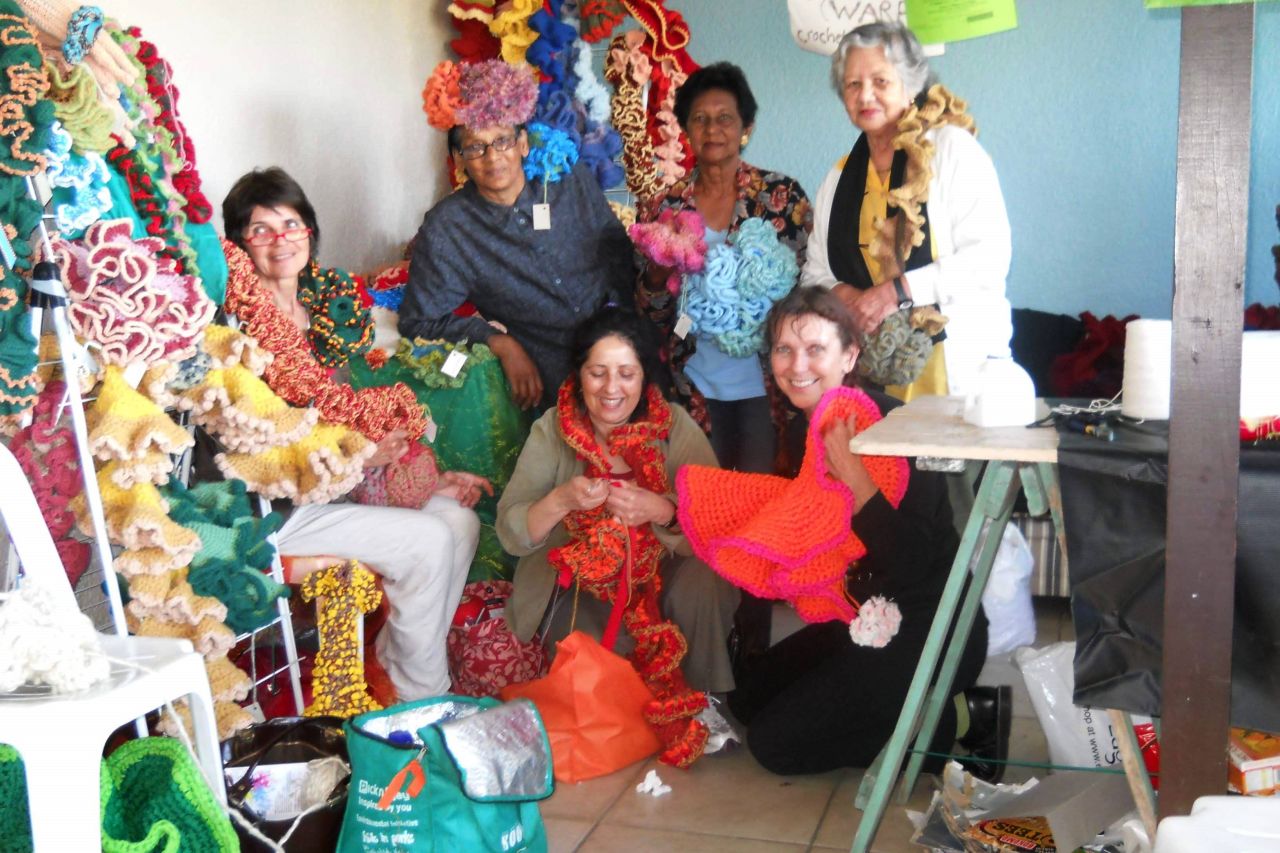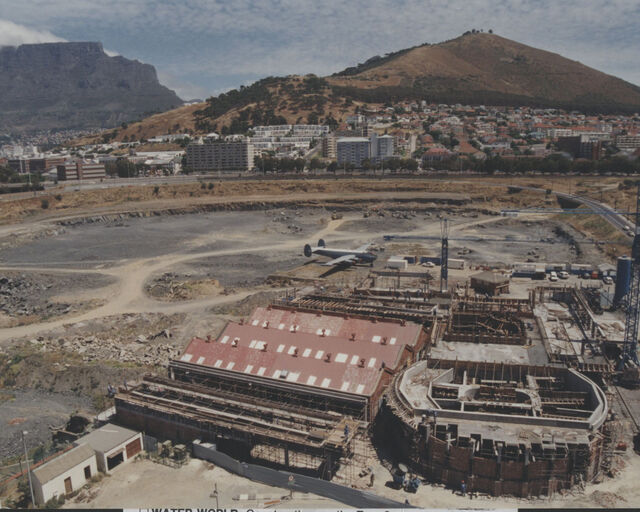An explosion of colour and texture – our new coral reef installation is made entirely of crochet! Check it out on the ramp between the Touch Pool and the Penguin Exhibit – colourful, larger-than-life, and fluffy as anything; it’s hard to miss…
The Abundance Crochet Coral Reef is the Woodstock Art Reef Project (WARP)’s creation. This spectacular collection of crocheted coral and marine life was hand-made by hundreds of South African citizens over 18 years. It is a work of art that highlights the plight of our ocean’s coral reefs.
How did the Abundance Crochet Coral Reef come to the Aquarium?
WARP is a satellite of the worldwide Crochet Coral Project, which was created by Margaret and Christine Wertheim of the Institute for Figuring in Los Angeles, USA.
WARP centres on the survival of coral reefs through crochet, using larger-than-life crochet techniques to create intricate coral artworks. The project is a powerful union of community engagement, creative expression, and environmental activism. WARP promotes collective action for our environment by combining art, mathematics, and activism. The project has garnered global influence and recognition, highlighting the potential of traditional crafts as a driver of positive change and awareness to protect coral reefs.
Maria van Gass and Leonie Hofmeyer-Juritz, the leaders of WARP, were inspired to initiate the satellite in Woodstock, Cape Town, after watching Margaret Wertheim’s TED Talk, “The Beautiful Math of Coral”. Other environmental activists, like Zola Ndimande and Dylan McGarry, as well as various donors and benefactors, have made significant contributions to WARP.
Fittingly, the Abundance Crochet Coral Reef has found a new home at the Two Oceans Aquarium, curated by Dr Dylan McGarry in collaboration with WARP. McGarry is a South African educational sociologist, artist, and storyteller. He is a senior researcher at the Environmental Learning Research Centre (ELRC) at Rhodes University, a co-director of the Global One Ocean Hub research network and the co-founder of Empatheatre. At the Aquarium, where education is at the forefront, visitors can now immerse themselves in this fuzzy coral reef experience while learning about the threats facing our reefs.

"The overwhelming experience that comes with facing ecological crises is that your small part does not count. Yet, when interacting with the Abundance Crochet Coral Reef, one gets to experience your small contribution, finding its place in solidarity with a wider tapestry of colour and experience. Each coral has a story, a person it was created by and can become a powerful connective aesthetic for people, especially children, to gain hope in times of crises, that their small contribution does indeed make a difference," says McGarry.
What does this installation teach us about coral reefs in the wild?
Coral reefs are under significant threat throughout the world. The oceans are experiencing an increase in temperature due to climate change. Primarily due to rising temperatures, between 30% and 50% of the world’s coral reefs have been lost in the last 40 years, with 14% dying between 2009 and 2018. Experts predict that, in the next 40 years, coral reefs will be destroyed on a global scale.
When you visit the Aquarium this school holiday, you may notice that the entire left side of the crochet coral reef is white. This depicts the phenomenon of coral bleaching. Increasing changes in temperature, nutrients, and light stress the coral, which causes them to expel the algae that live symbiotically within their bodies and give them their colour. Hence, “coral bleaching”: although a bleached coral is still alive, the stress can eventually lead to death. With the algae gone, the coral loses its primary food source, making it more vulnerable to disease.
The white side of the crochet coral reef is in stark contrast to the vivid colours of the “healthy” side of the reef. Coral bleaching serves as a clear reminder of our impact on the ocean – it emphasises the urgency of climate change and urges us to make a more positive impact.
We can all make a difference by supporting the drive against climate change. Conserving water, supporting ecologically sound and organic farming methods, and using less energy can contribute to the preservation of coral reefs.
Related News
Sign up to our Newsletter
Receive monthly news, online courses and conservation programmes.




